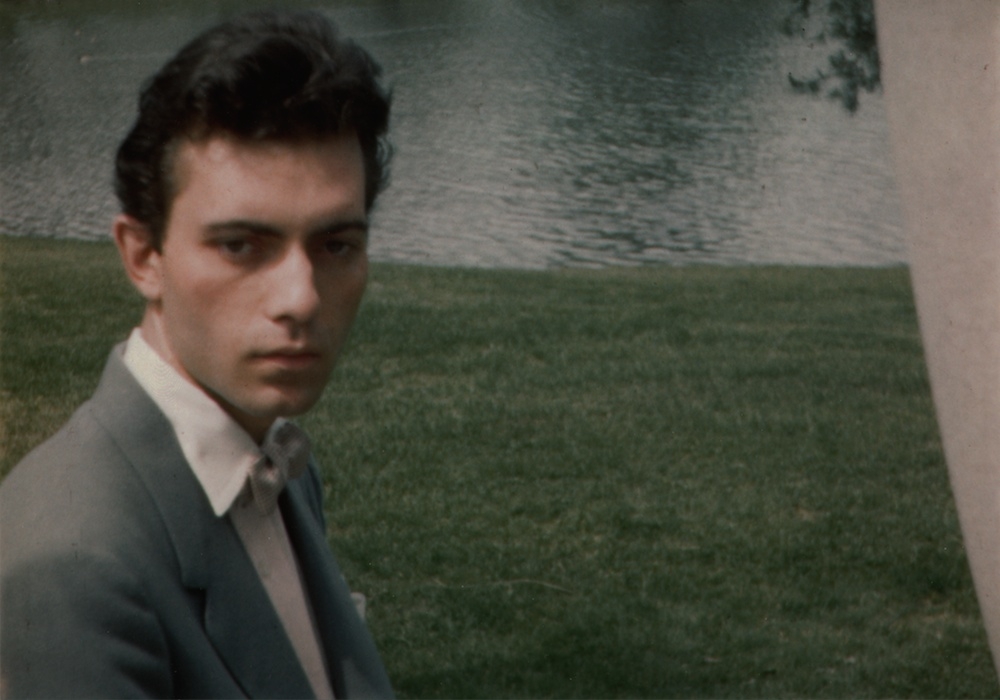Early Films of the 40s & 50s
6712 Hollywood Boulevard
Los Angeles, CA 90028
USA
Early Films of the 40s & 50s
Gregory J. Markopoulos, Psyche, 1947, 24 min
Gregory J. Markopoulos, Christmas-USA-1949, 1950, 13 min
Gregory J. Markopoulos, Eldora, 1953, 11 min
Gregory J. Markopoulos & Robert C. Freeman, Swain, 1950, 20 min
Introduced by Mark Webber
Having made 8mm films as a child, Markopoulos sought to advance his knowledge of filmmaking by enrolling at the USC Film School, where he attended lectures by Joseph von Sternberg and observed productions of Fritz Lang, Alfred Hitchcock and Alexander Korda. His first 16mm film, Psyche, was made in Los Angeles at this time, a period in which Markopoulos became acquainted with Curtis Harrington, Kenneth Anger and Raymond Rohauer. Abandoning his studies after only three semesters, he returned to his hometown of Toledo, Ohio, and completed some half dozen films. These early works often explore themes of sexual awakening and the anxiety of coming to terms with homosexuality in an age of repression. In the mid-1950s, the filmmaker embarked on the ill-fated feature Serenity in Greece before reemerging with Twice a Man (1963), the work that secured Markopoulos’ position as one of independent cinema’s leading figures.
Psyche
Gregory J. Markopoulos, 1947, USA, 16mm, color, sound, 24 min
Psyche, which takes as its source an unfinished novella of the same name by Pierre Louÿs, is a remarkably ambitious and sensual work for a 19-year old to have made in the late 1940s – addressing themes of eros and lesbianism, and containing sequences of montage that presage the techniques of rapid editing that advance in later works. Psyche can stand alone, but was also shown together with Lysis and Charmides (both made in Toledo the following year, inspired by Platonic dialogues) in the trilogy Du sang de la volupte et de la mort (1947-48).
“The first thing which I did was to delete the novelette of its lush rhetoric and retain only its symbolic color. In Psyche, color plays an important role, similar to the role which color plays in the paintings of Toulouse Lautrec. Color reflects the true character of the individual before us, whether it be on the screen, in a painting, or in the street. Color is Eros.” (Gregory J. Markopoulos, Psyche’s Search for the Herb of Invulnerability, 1955)
Christmas-USA-1949
Gregory J. Markopoulos, 1950, USA, 16mm, b/w, sound, 13 min
Having abandoned his studies at USC, Markopoulos returned to Ohio and completed some half dozen films before embarking on the ill-fated feature film Serenity in Greece. Christmas-USA-1949 (aka Christmas USA) weaves together documentary and fiction to convey a moment of awakening, and was shot at the ‘Cavalcade of Amusements’ travelling fairground, and in the Markopoulos family home and local surrounds.” Its closing credits declare “the end of a period.”
Eldora
Gregory J. Markopoulos, 1953, USA, 16mm, color, silent, 11 min
“The dreamlike Eldora describes love’s fragmenting effects on the consciousness of an adolescent girl.” (Kristin M. Jones). Eldora was shot on 8mm stock given to the filmmaker by the LA-based exhibitor and collector Raymond Rohauer, and is dedicated to Robert C. Freeman, his collaborator on Swain. In his writings, Markopoulos refers to the film’s “cautious and excruciatingly slow movement” and describes its heroine “proceeding as if with lunar strides across the wet, soft, earthly shore matter of the Maumee River.”
Swain
Gregory J. Markopoulos & Robert C. Freeman, 1950, USA, 16mm, color, sound, 20 min
“An exquisite early psychodramatic trance film reminiscent of Maya Deren’s films, Swain is loosely inspired by Nathaniel Hawthorne’s Fanshawe and is rich in metaphor. Starring Markopoulos, Swain is an evocation in gentle images and visual symbols of a subconscious rejection of the stereotyped masculine role that both society and women insist upon. This rejection takes the form of escape – a flight in fantasy from what is visually perceived as crude, repelling sexuality into the purity of creative activity, of nature, and of the individual personality left inviolate.” (Donald Weinstein, Swain: Flowers and Flight, 1963)
Mark Webber
This program is supported by the Los Angeles County Board of Supervisors through the Los Angeles County Arts Commission; the Department of Cultural Affairs, City of Los Angeles; and the Mike Kelley Foundation for the Arts. Additional support generously provided by American Cinematheque. We also depend on our members, ticket buyers, and individual donors.
Los Angeles Filmforum is the city’s longest-running organization screening experimental and avant-garde film and video art, documentaries, and experimental animation. 2015 is our 40th year.

